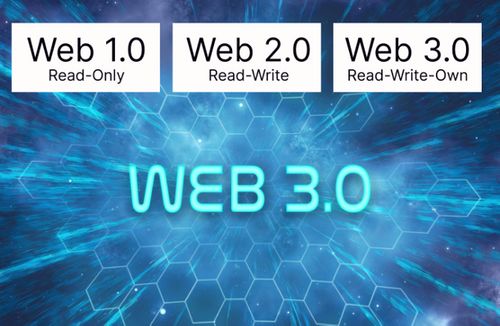Web 1.0, Web 2.0, Web 3.0: What’s the difference?
Aug 30, 2022 · 2 mins read
0
Share

Sir Tim Berners-Lee created “web 1.0” (the original World Wide Web) in 1989. He wanted to create an open, decentralised protocol that would allow information-sharing from anywhere on Earth.
Save
Share
In the web 1.0 era, only a few companies owned static websites and put out content. There was very little interaction between users and these websites. It was the “read-only” web.
Save
Share
In web 2.0, (from 2004) everyone began interacting with websites. On platforms like Orkut and Facebook, people could not only read online but also write online. But in Web 2.0 (which continues to today), the companies own websites/platforms and control your access.
Save
Share
For example - If you violate any rules of companies like Twitter or Quora, you are warned and banned for not following their rules. You lose access to your account and data.
Save
Share
With Web 3.0, you can not only access content online, and interact with it, but also own it. There is no central authority that controls the network. The ownership gets distributed among its builders and users. Examples: Github, Discord, Bitcoin.
Save
Share
Web 3 is a better version of the internet. It is permissionless, and everyone has equal access. Blockchains, NFTs, and cryptocurrencies are part of Web 3.0. They make users powerful as they own their content.
Save
Share
Ownership: Web 3.0 allows decentralised ownership through Non-Fungible Tokens (NFTs).
No Censorship: In Web 3.0, your data is on the blockchain and only you decide when to remove it.
Identity: You need only one blockchain address to log in securely to all platforms as anonymous.
Save
Share
What about payments?
Web 3.0 uses cryptocurrencies to transact money online and doesn’t depend on the banking system or processors. With a blockchain like Bitcoin, there are no third parties involved; everything happens between two nodes (users).
Save
Share
Web 3.0 is still evolving and has limitations. It can’t be accessed by everyone, everywhere because of the high cost of technology, and unequal levels of education and awareness.
Save
Share
Final Note: Tim Berners-Lee’s vision of a decentralised, open World Wide Web came true. The age of decentralised user ownership is now upon us.
Save
Share
0